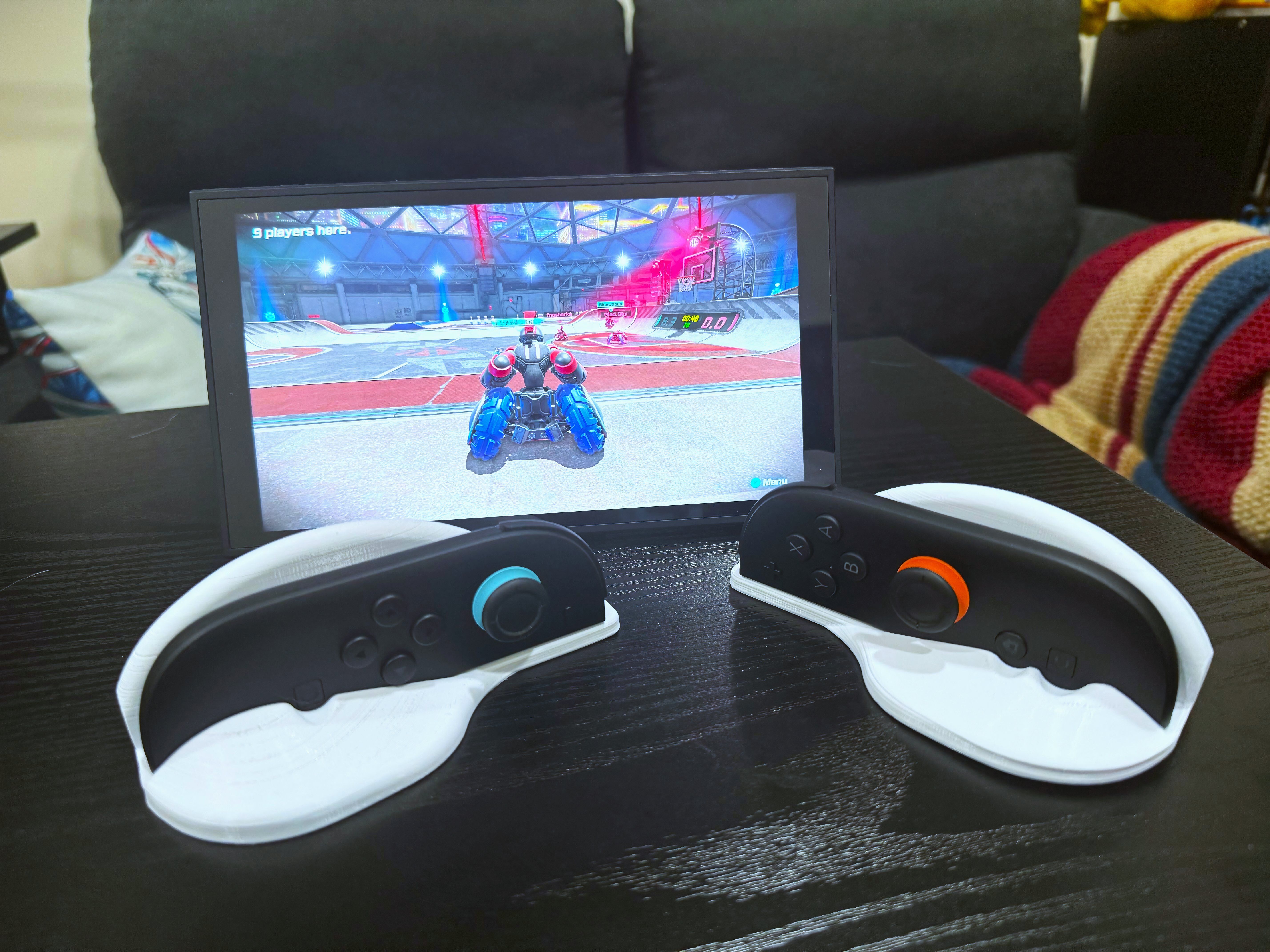For the past two months, I’ve been living in that fleeting new video game console honeymoon phase with my Nintendo Switch 2. I’ve had a blast racing in Mario Kart World, smashing in Donkey Kong Bananza, and reading pamphlets in Nintendo Switch 2 Welcome Tour. (Okay, that last one was less of a blast). But with the new toy sheen starting to wear off, I’m finally ready to admit that Nintendo’s new console has a problem: Those mouse controls just aren’t very comfortable.
This wasn’t exactly new news to me. When I first went hands-on with the Switch 2 back in April, I was impressed by the Joy-Cons’ latest trick but could sense that there would be a problem long-term. Nintendo hardly redesigned the shape of the Switch’s signature controllers, which meant that using one as a mouse would require palming a thin strip of plastic. It worked in small bursts, but how would that fare in more demanding games rather than quick experiences?
I got an answer to that question this month when reviewing Drag x Drive. The wheelchair basketball game showcases Nintendo’s fullest use of mouse controls yet. To move and turn, you need to constantly swipe the Joy-Cons across a surface. And since we’re dealing with a tense sports game, you’re bound to grip them a little tighter when you do it. While I loved toying with the controls in Mario Party minigames, I began to dread the idea of using them for long periods of time.
I needed a solution. And thankfully, other Switch 2 owners did too.
I learned as much when I was discussing the comfort problem with a colleague. She mentioned that she’d seen some people fixing the problem through 3D printing. While Nintendo was leaving money on the table by not creating a shell attachment for the Joy-Cons, players have been hard at work over the past two months since launch engineering their own plastic peripherals, from carrying cases to french fry holders. The most practical prints out there, though, are controller mods — and there are plenty that aim to make Nintendo’s controllers more ergonomic.
I wanted to try one and after researching some variations I went with a design by Rewolf. That invention would slot each Joy-Con into a half-mouse shell that would support my palm on a thicker curve while still giving me access to every single button. It’s an ingenious little solution, even if it isn’t compatible with the Joy-Con mouse slides that help the controllers move across surfaces more smoothly.
My colleague was kind enough to 3D-print a white plastic set for me just in time to save my wrists from Drag x Drive. Would that simple mod be enough to fix the console’s biggest problem? On first try, that answer seemed to be a resounding no.
My initial testing with Drag x Drive immediately helped me understand why Nintendo designed these controllers the way it did. Some of the games that utilize mouse controls require big gestures rather than precise micromovements. An agile controller is a necessity to support that. Dragging two hunks of plastic across a snack table wasn’t just awkward, but loud. On top of that, I had forgotten that the Joy-Cons’ real trick is that mouse controls can be used in tandem with motion controls. Picking a mouse shell off the table to shoot a basket was a no-go, especially since the Joy-Con loosely slots into the printed part. Maybe these controllers just couldn’t look like a mouse because the functionality demanded a redesign.
Drag x Drive is a specific use case, though, and not a particularly good one. Even without the mouse attachment, it’s an unwieldy game that never quite works reliably. It’s built to make the most of the Joy-Cons, but in the process, it finds the limits of the tech by doing a bit too much. If I really wanted to see if a mouse mod would make my life better, I’d have to test some more subtle games. It was back to the world of Nintendo Switch 2 Welcome Tour for me.
The mod worked significantly better in that context. I spent a good hour setting new high scores in its balloon-popping first-person shooter and UFO-controlling minigames. It’s not that the controls became more precise; it’s just that the strain dissipated. My palm could now rest comfortably on a curved surface whereas I previously would have a plastic strip digging into my hand as my grip naturally tensed up.
I enjoyed the same benefit when testing Super Mario Party Jamboree + Jamboree TV, more naturally shooting Koopas during its Carnival Coaster minigame. The only caveat was that, once again, I butted up against a few moments that required me to lift my Joy-Con. I imagine that the most practical use case for a device like this would be in shooters, strategy games, or other genres that are using mouse controls in more traditional ways.
The peripheral isn’t a perfect solution; if anything, it leaves me feeling like the Joy-Con design is a more functional compromise than I initially thought. But using it reminds me that the ingenuity of video game communities remains unmatched. There’s a storied history of players inventing third-party add-ons built to fix a problem, then sharing them with other players. Sometimes they can be silly little experiments, like a Joy-Con beverage holder; other times, they can address serious accessibility limitations in gaming hardware years before platform holders address those issues with their own adaptive tech. It’s a productive dialogue between manufacturers and fans that can find new solutions that suit different players’ needs.
I may not have fixed my Switch 2 problem entirely yet, but I at least have a working solution that will allow me to comfortably binge Metroid Prime 4: Beyond when it launches. That’s remarkable considering that the console is barely old enough to smile. Never underestimate the power of annoyed fans with a 3D printer.



